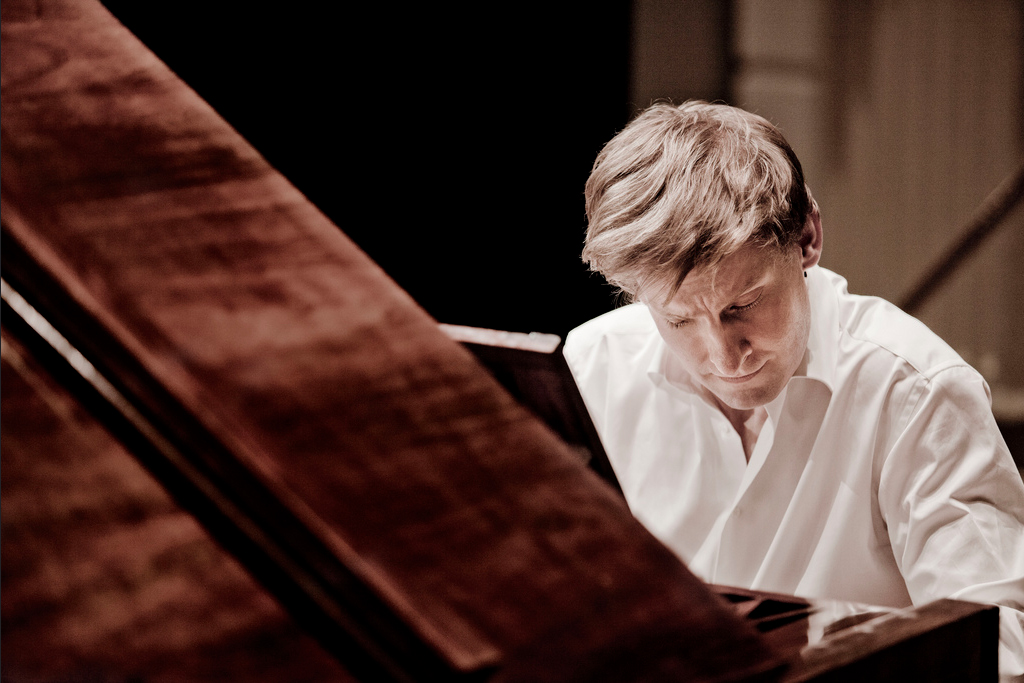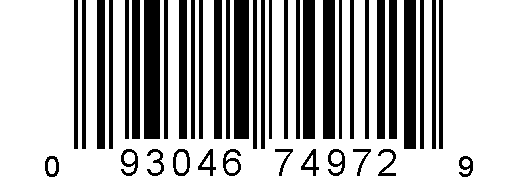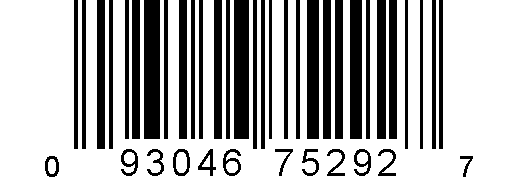Fortepiano Recital: Kristian Bezuidenhout
Bach / Mozart / Beethoven
Temple de Cully, 2016-06-30

2016-07-06 — Original posting
Table of Contents
Introduction — The Festival “Lavaux Classic”
13 years ago, a new festival for classical music emerged at the lake of Geneva, in Cully, VD, between Lausanne and Vevey / Montreux. For the following 12 years, that festival, named “Cully Classique”, prospered and grew into a respectable music festival. This year now saw the first, larger-scale incarnation of that festival, now named “Lavaux Classic“. It has become a respectable festival, with 70 events (paid and free concerts, workshops), held over 10 days. “Lavaux Classic” does not need to hide among the other festivals in Switzerland—neither from the point-of-view of scenery / landscape, nor from its high-level offering in concerts with prominent musicians from all over the world.
In this concert, the Australian artist Kristian Bezuidenhout gave a recital in the church of Cully (Canton de Vaud), a small, almost intimate venue in the center of the little village. The following two days featured recitals by Boris Berezovsky and by Pierre-Laurent Aimard, both appearing in the Salle del Castillo in Vevey.
The Artist
Kristian Bezuidenhout was born 1979 in South Africa, did his musical studies in Australia and at the Eastman School of Music. He now lives in London. His main teachers were Rebecca Penneys (modern piano), Arthur Haas (harpsichord), Malcolm Bilson (fortepiano), and Paul O’Dette (continuo playing, performance practice). By now, Bezuidenhout is one of the leading artists on the fortepiano. Besides pursuing a career as recording artist, he is engaged concert activities all over the world, covering solo recitals, chamber music and concerto/orchestral appearances. For additional information see also his Wikipedia entry (currently in Dutch only).
In this recital, Kristian Bezuidenhout was playing a fortepiano by Christoph Kern (Staufen im Breisgau, Germany). This was a replica after an instrument by Anton Walter (Vienna, 1795).
Bach: Toccata in D minor, BWV 913
Kristian Bezuidenhout opened his recital with the Toccata in D minor, BWV 913, by Johann Sebastian Bach (1685 – 1750). This is one of a small series of Toccatas (BWV 910 – 916) that the young Bach wrote around 1705 – 1712, while in Weimar. BWV 913 consists of four sections:
(Tempo ordinario), 3/2 — Fuga 4/4 — Adagissimo, 4/4 — Fuga, Allegro,3/4
Starting a fortepiano recital with a composition by the young Bach? This may sound strange from one of the leading exponents in historically informed harpsichord and fortepiano playing! The fortepiano was invented (by Bartolomeo Christophori) only half a century after Bach wrote that composition. However, one can consider these early Toccatas from the Weimar period as highly experimental works. Bach was exploring musical forms, playing with new means of expression. In fact, BWV 913 is fairly “wild”, some kind of notated, free fantasy. As such, it is certainly far away from the intellectually and musically highly constructed, architectural pieces of his later years.
Note that the instrument designation is not entirely clear for these Toccatas: harpsichord? organ? clavichord? An indication for this is also, that the Toccatas are essentially devoid of instrument-specific features, i.e., they can technically be played on ll of the instruments just mentioned. On top of all this, the sound characteristics and the scope of the means of expression on the clavichord (one of Bach’s favorite instruments, privately) can very well be covered on a fortepiano. Sure, the clavichord does not have a sustain pedal, let alone a moderator—but if one abstains from using those, playing this Toccata on a fortepiano should really be OK. Note also that unlike the harpsichord, the clavichord does allow for some dynamic variation, i.e., crescendo and decrescendo.
The Performance
Kristian Bezuidenhout played this freely, emphasizing the experimental character of the composition, but using the technical and expressive means of his instrument sparingly. Essentially he just added some extra ornaments, subtle agogics, focusing on elaborating the big phrases & arches. I got the impression music that emerged, was invented at this very moment, particularly in the Adagissimo segment: like freely improvised preluding, with audacious, often unexpected harmonic turns.
Even if this Toccata does not have the conciseness or the stringency of Bach’s later works, it was still a very suitable introduction for this recital. It allowed the audience to get acquainted to the acoustics of the venue, and to the sound of the instrument. Also, this way, people were better prepared to listen to and hear all the details in Bezuidenhout’s Mozart interpretations.
Mozart: Piano Sonata No.11 in A major, K.331, “Alla Turca”
The following composition by Wolfgang Amadeus Mozart (1756 – 1791), the Piano Sonata No.11 in A major, K.331 (300i), “Alla Turca”, does not need to be introduced—it is probably the most well-known sonata by this composer. It was probably written around 1783, either in Salzburg or in Vienna. It features a set of variations as first movement, and the famous “Alla turca” as last movement:
- Andante grazioso (6/8) — Var. I-IV — Var. V: Adagio — Var. VI: Allegro (4/4)
- Menuetto (3/4) — Trio (3/4) — Menuetto da capo
- Alla turca: Allegretto (2/4)
The last movement is an expression of the popularity of Turkish themes in Austria, ever since Prince Eugene of Savoy won over the Turks in the Austo-Turkish War 1716 – 1718.
Actually, there shouldn’t be a real need to present Kristian Bezuidenhout’s Mozart-playing in detail, as he just successfully finished his project of recording all of Mozart’s solo works for piano. See below for pointers to the CD recordings that are relevant for this concert. Still, of course, it was fascinating to watch and hear him in a live performance, and to see how the artist lives in and out of this music, how he forms it in a live situation, out of the very moment.
Bezuidenhout’s Approach to Mozart
Each and every time when I hear Bezuidenhout play, I enjoy how he can make that instrument sing. The instruments by Anton Walter (or their replicas) in my experience are best for achieving such a singing tone. Bezuidenhout avoids exaggerations and excessive agogics, overstretched fermatas. He also is restrictive in the use of dynamics. His focus is on emotional depth and careful articulation, rather than mere effect and surprise effects.
The Performance
In the variation movement in this sonata, both parts of the theme have repeat signs, except for the second part in the final variation. Bezuidenhout often simplifies the first pass, but instead decorates the repeat pass with inconspicuous little arabesques. In variation II, the acciaccaturas in the left hand anticipate the Turkish “flavor” of the last movement, and the same can be said about the left-hand arpeggio chords in the last variation. I also found the short pauses between the variations very sensible and well-fitting, and I loved the Adagio variation (V) with its rich ornamentation.
The Trio part of the second movement was delicate, ethereal, especially where the artist used the moderator. This dampens, darkens the sound by inserting a piece of cloth between the hammers and the strings. Bezuidenhout was especially conscious and careful about forming internal transitions: every detail is “right”, fermatas and little hold-ups are all fitting perfectly, make perfect sense. Each of these transitions to me was a little miracle.
I found the most liberal part of Bezuidenhout’s interpretation to be in the final movement, Alla turca. That is understandable , considering how well-known, over-used, if not abused that movement is in our days. I particularly enjoyed the witty, syncopated accents with acciaccatura that the artist added in select, unexpected places. Still, I was happy and enjoyed the fact that he did not turn the movement into a caricature, or otherwise exaggerate it. Bezuidenhout played at a fluent pace, and prior to the Coda, he avoided sounding trivial or ordinary by even simplifying the text and adding an octave shift.
Mozart: Piano Sonata No.15 in F major, K.533 / 494
For some time, people considered the second sonata in the program being two separate compositions, the Allegro and Andante in F major, K.533, and the Rondo in F major, K.494. However, musicologists now assume that these two works are a single piano sonata, now counted as No.15:
- Allegro (2/2)
- Andante (3/4)
- Rondo: Allegretto [Andante] (2/2)
The Performance
In the Allegro, I again liked the subtle transitions, the little ritenuti between phrases, or at the start of a theme. Some people claim that compared to a modern concert grand, the duration of tones on a fortepiano lasts much shorter. This can be gradually true at best. The f chords in Bezuidenhout’s left hand proved that this is not necessarily true, especially considering the smaller sound volume of the instrument overall. Once more, the artist very diligently and effectively darkened the sound by using the moderator. To me, this is one of the “signature features” in the playing of this artist!
The middle movement once more exhibited Bezuidenhout’s targeted, little hesitations at the beginning of phrases and themes. He also impressed me with extra-long pause, exploring the fading resonance prior to the return of the theme in the second part. In many ways, it’s dreamy, pensive, forlorn music—up to the dramatic build-up in the Coda. Especially in the last part, abysses seemed to open up! To me, this was music of a desperate man, far away from any rebelling “Amadeus attitude”!
The playful Rondo brought some recovery to brighter worlds—even though the minore intermezzo appeared to indicate internal conflicts.
Beethoven: Piano Sonata No.8 in C minor, op.13, “Pathétique”
Ludwig van Beethoven (1770 – 1827) wrote his Piano Sonata No.8 in C minor, op.13, “Sonate pathétique” in 1798. It was published the following year and has since been one of Beethoven’s better-known sonatas. I don’t want to write more about the composition here, other than pointing out that I have compared a few CD recordings of this sonata in an earlier post (this includes two performances on fortepiano, by Ronald Brautigam, and by Jos van Immerseel). The sonata features the following three movements:
- Grave (4/4) — Allegro (2/2) — Tempo I (4/4) — Allegro molto e con brio ( 2/2) — Grave (4/4) — Allegro molto e con brio ( 2/2)
- Adagio cantabile (2/4)
- Rondo: Allegro ( 2/2)
Kristian Bezuidenhout’s Beethoven is new ground for me—possibly also for the artist. Now that he has covered all of the Mozart solo works in CD recordings, he seems to turn more and more towards the late classical period (including Schubert and Mendelssohn) in concerts and recordings. So, this concert was an opportunity to “peek” into potential upcoming (and interesting) recordings!
The Performance
Right from the first tone, this interpretation was catching my attention! Bezuidenhout made the strong opening fp chord extra long, listening into the instrument’s resonance, as it slowly faded away. Thereafter, the punctuated passages, and the virtuosic cadenzas in the Grave were very impulsive and expressive. The following Allegro molto e con brio was amazingly fast. It featured almost extreme dynamics, as well as distinct agogics (I’d almost call it rubato). In the development section I noted the dramatic pp passages, played entirely without dampers. With this, he achieved a particularly menacing al fresco effect (blurring of the sound). Finally, what also stood out was the long fermata and subsequent overlong pause prior to the last return of the Grave.
The second movement, Adagio cantabile, may have appeared unusually fluent. However, this is absolutely in line with the score, which is written in 2/4 time. Bezuidenhout resists the temptation to slow down / broaden the tempo in order to elaborate the demisemiquavers towards the end. And of course he used the moderator to create sound colors that are simply impossible to achieve on a modern piano.
Also the last movement may have felt a little (too?) fast—but again, this is justified in the score, which is in alla breve (2/2) time. In other words: the impression of superficiality in the fast passages is intended. In Bezuidenhout’s hands, shorter semiquaver figures appear like ornaments. Yet, despite the fast tempo, the artist added extra ornamentation and (slightly) extended the cadenza that precedes the fff ending.
Is it Worth it?
Yes! Sure, by now, there is a fair number of artists playing and recording Beethoven on a fortepiano. Kristian Bezuidenhout’s playing may not have felt exceedingly spectacular. He is not the person to seek the “big splash”, but he is looking for the appropriate expression in Beethoven’s music. Still, he will add new aspects, new insights to performing Beethoven on historically correct instruments. To me, this first exposure to his Beethoven playing was definitely an enriching experience.
Encore, Conclusion
A little post scriptum about the instrument: a fortepiano is a piano in its very early stages of development. One cannot expect the machine-like precision, stability or reliability of modern concert grands. Those who listened carefully may have noticed a slight degradation in the instrument’s tuning towards the end of the concert. This did not affect the pleasure and the listening experience, though. Also, compared with modern instruments, the much lighter hammers and the simpler construction of the key mechanics require a totally different touch, keyboard technique by the player. In a live concert, occasional missing tones are almost inevitable—and also these don’t affect the concert experience in any significant way.
Kristian Bezuidenhout managed to gather the full attention of the entire audience, making everybody immerse in the soundscape produced by this delicate instrument. This was evident from the long applause. Bezuidenhout honored this by returning to Mozart again: as encore, he played the Andante cantabile from the Sonata in C major, K.330. You can watch Bezuidenhout perform that same encore at the end of the YouTube video that I have included in the bottom of an earlier post.
Addendum
For the same concert, I have also written a shorter review in German for Bachtrack.com. This posting is not a translation of that German review, the rights of which remain with Bachtrack. I create the German review using a subset of the notes taken during this concert. I wanted to enable my non-German speaking readers to read about my concert experience as well. Therefore, I have taken my original notes as a loose basis for this separate posting. I’m including additional material that is not present in the Bachtrack review.
CD Recordings
Kristian Bezuidenhout has recorded the Mozart sonatas in this concert on the following CD (sets):
Mozart: Sonatas, Fantasias & Variations, Vol.1
Mozart: Fantasia C minor, K.475; Sonata in F, K.533/494; Sonata in B♭, K.570, Variations K.455
Kristian Bezuidenhout, fortepiano by Derek Adlam, Welbeck, 1987, after Anton Walter, Vienna, ca. 1795
harmonia mundi usa HMU 907497 (CD, stereo); ℗ / © 2010
Booklet: 20 pp. en/fr/de

Mozart: Keyboard Music, Vol.2
Mozart: Sonata in C, K.330; Rondo in A minor, K.511; Rondo in D, K.485; Adagio in B minor, K.540; Sonata in C minor, K.457
Kristian Bezuidenhout, fortepiano by Paul McNulty, Divisov, CZ, 2009, after Anton Walter & Sohn, Vienna, ca. 1802
harmonia mundi usa HMU 907498 (CD, stereo); ℗ / © 2011
Booklet: 20 pp. en/fr/de

Mozart: Keyboard Music, Vols. 5 & 6
Mozart: Sonatas K.281, 282, 309, 331; Variations K.265, 353, 398, 500; Romanze in A♭, K.Anh.205; Adagio in F, K.Anh.281
Kristian Bezuidenhout, fortepiano by Paul McNulty, Divisov, CZ, 2009, after Anton Walter & Sohn, Vienna, ca. 1805
harmonia mundi usa HMU 907529 (2 CDs, stereo); ℗ / © 2013
Booklet: 40pp. en/fr/de












